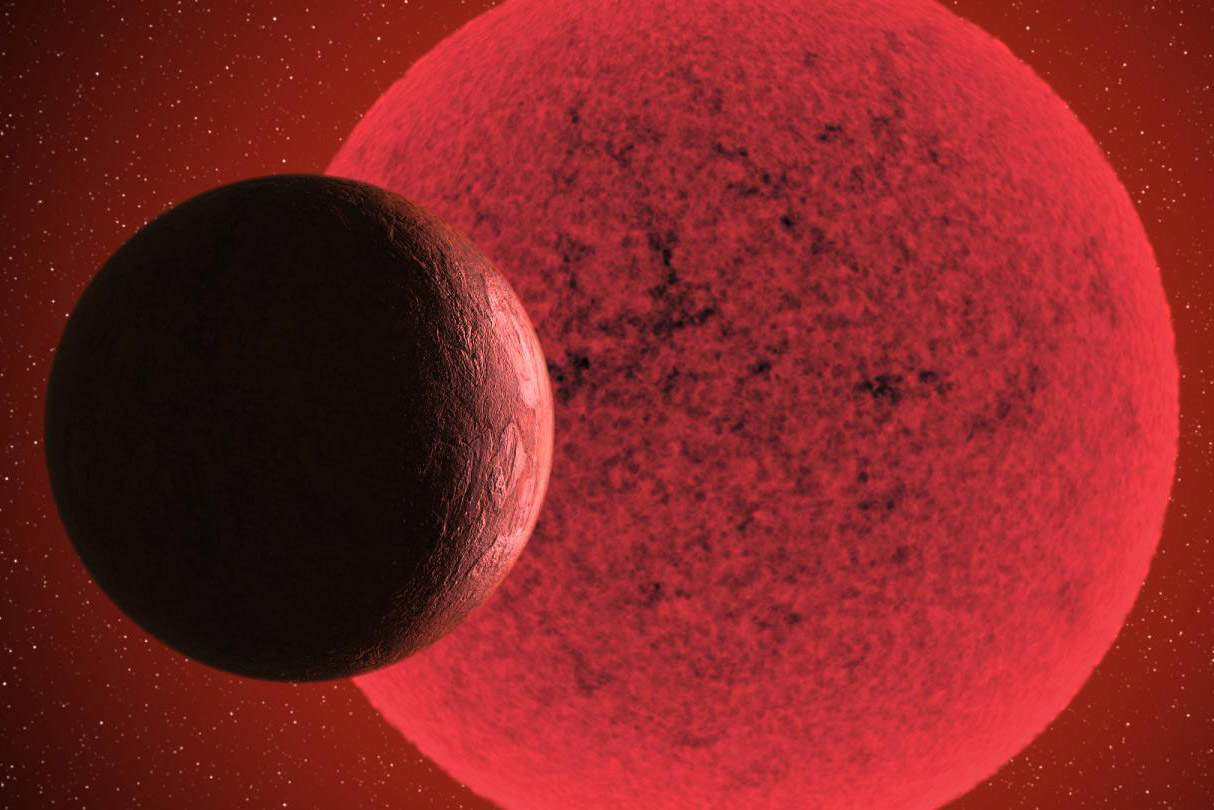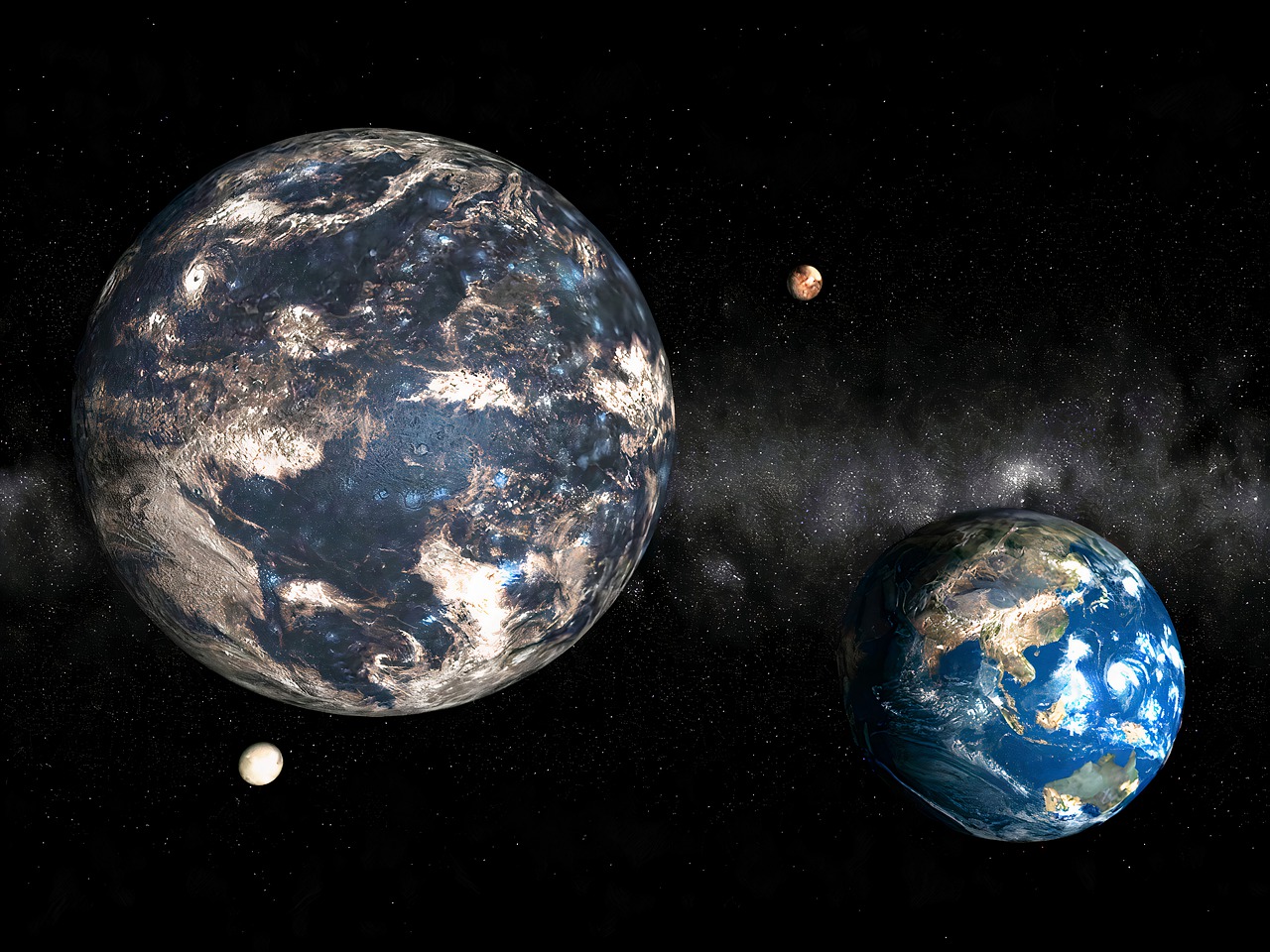Astronomers have revealed the discovery of a Super-Earth orbiting a faint red dwarf within the star’s habitable zone. The distant world is believed to have 4 times the mass of Earth.
To date, researchers have discovered 5,035 distant alien worlds, with tens of thousands awaiting confirmation. The rate at which we are finding exoplanets has drastically increased since discovering the first exoplanet in 1992, orbiting a main-sequence star, 51 Pegasi. This planet, which is half the size of Jupiter, nearly grazes its star.

Now, researchers have discovered a new, distant alien world orbiting a distant red dwarf, and the finding is an exciting one.
Located around 36.5 light-years from Earth, astronomers have reported discovering the existence of an alien world that orbits a star called Ross 508. This distant planet is thought to be around four times as massive as the Earth. Based on our understanding of the planetary mass limits, it is most likely a rocky planet rather than a gaseous one.
The Subaru Telescope and the hunt for Exoplanets
A team of international astronomers led by NASA’s National Astronomical Observatory of Japan carried out a survey utilizing the Subaru telescope in 2019.
NEWSLETTER
Never miss a news release from the Curiosmos team.
Their goal was simple: to look for distant alien worlds that orbit dim red dwarf stars by identifying Doppler (radial velocity) shifts in infrared and near-infrared wavelengths.

It is possible to search for fainter, and therefore older, more established red dwarf stars.
Using the data from the campaign, we have identified the first exoplanet. Known as Ross 508 b, the distant world is described in a paper led by astronomer Hiroki Harakawa of the Subaru Telescope, and it is promising. Initial data suggests the distant world orbits its Sun every 10.75 days.
Given this data, we can deduce that Ross 508 b’s orbit is much closer to its star than that of the Earth. However, there’s a significant difference; compared to our Sun, Ross 508 is much smaller and fainter.
A Big Deal
This is very important because it tells us a lot about the stellar radiation being emitted from the star. Ross 508 b receives approximately 1.4 times the solar radiation our planet is struck by at this distance. This means that the exoplanet researchers have now found is located on the very inner edge of its Sun’s habitable zone.

Basically, the habitable zone is the distance from a star at which liquid water can remain on a planet’s surface – provided it has a suitable atmosphere.
In other words, experts believe that there is a chance that this super-Earth, if indeed rocky in nature, could potentially be suitable for life because it could possibly host water on its surface in a liquid state.
This discovery points to a bright future in the search for distant alien worlds. Among other things, Ross 508 b transits its star.
As a result, the TESS observatory, which targeted the star’s sector in April and May of this year, could have acquired enough transit data to allow astronomers to infer whether the exoplanet has an atmosphere.
TESS has performed above expectations, already discovering more than 2,200 exoplanet candidates and hundreds of rocky planets that could potentially host life.
Next Step; Understanding Ross 508 b’s atmosphere
Scientists can use these observations to characterize the atmospheres of potentially habitable worlds.
Furthermore, Ross 508 is one of the smallest and faintest stars with an orbiting world that has been found using radial velocity. Its mass is 18 percent that of the Sun.In the near future, we may have the opportunity to uncover many exoplanets orbiting dim stars and learn about their complex planetary systems if we use this detection technique at infrared wavelengths.
A paper detailing the discovery of Ross 508 b was accepted into the Japan Astronomical Society Publications and is available on the preprint server arXiv.
© 2022 Petri Pixel. All rights reserved. This material may not be published, broadcast, rewritten or redistributed without permission.





